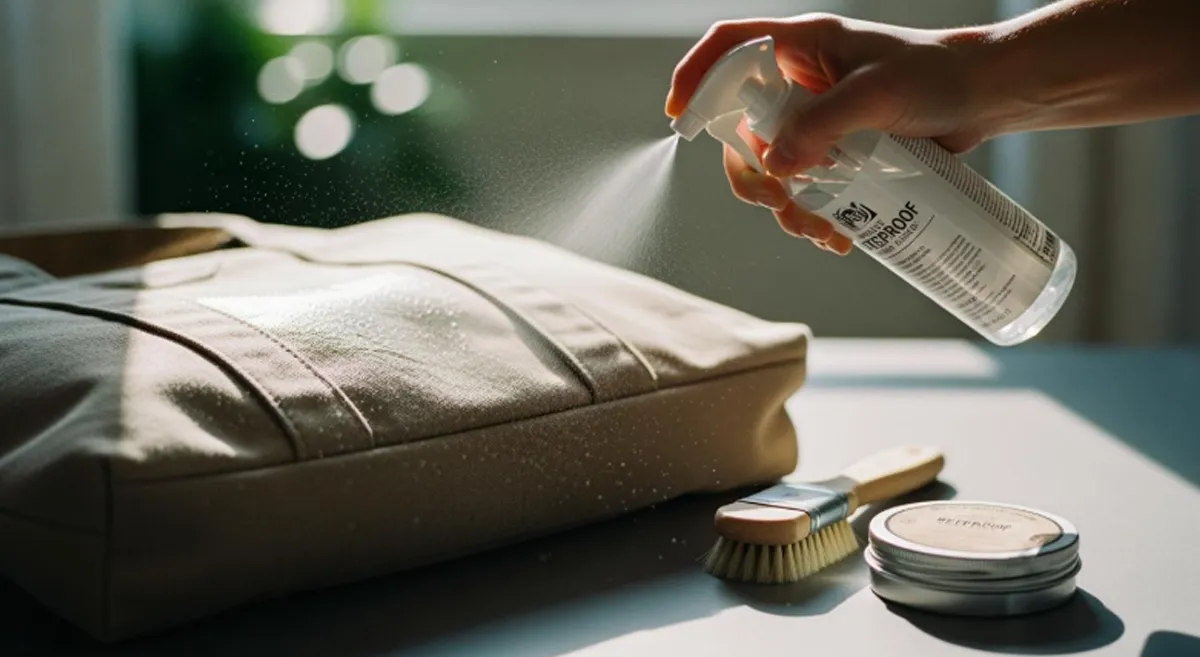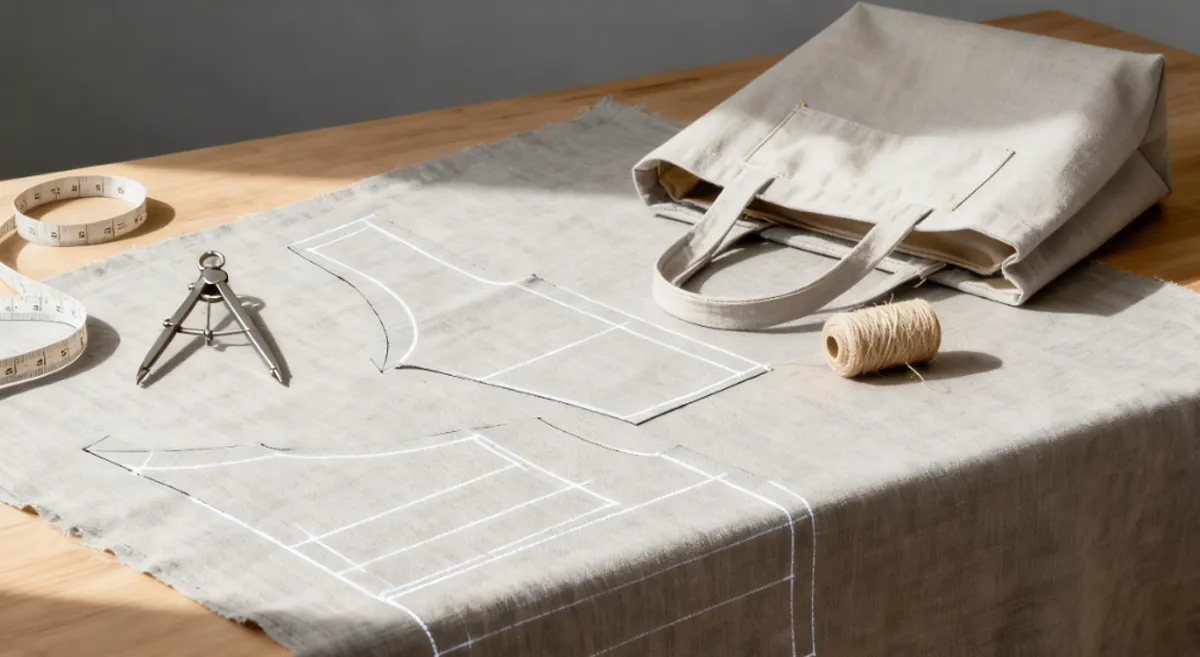You want to know how to remove screen printing from fabric. You might want a fresh look, or maybe you made a mistake on your cotton bag, canvas backpack, or shirt. Don’t worry—you can safely remove prints if you use the right method. Try acetone, sugar scrubs, or heat. Always check your fabric first. Some materials react differently, so take care with backpacks and canvas bags.
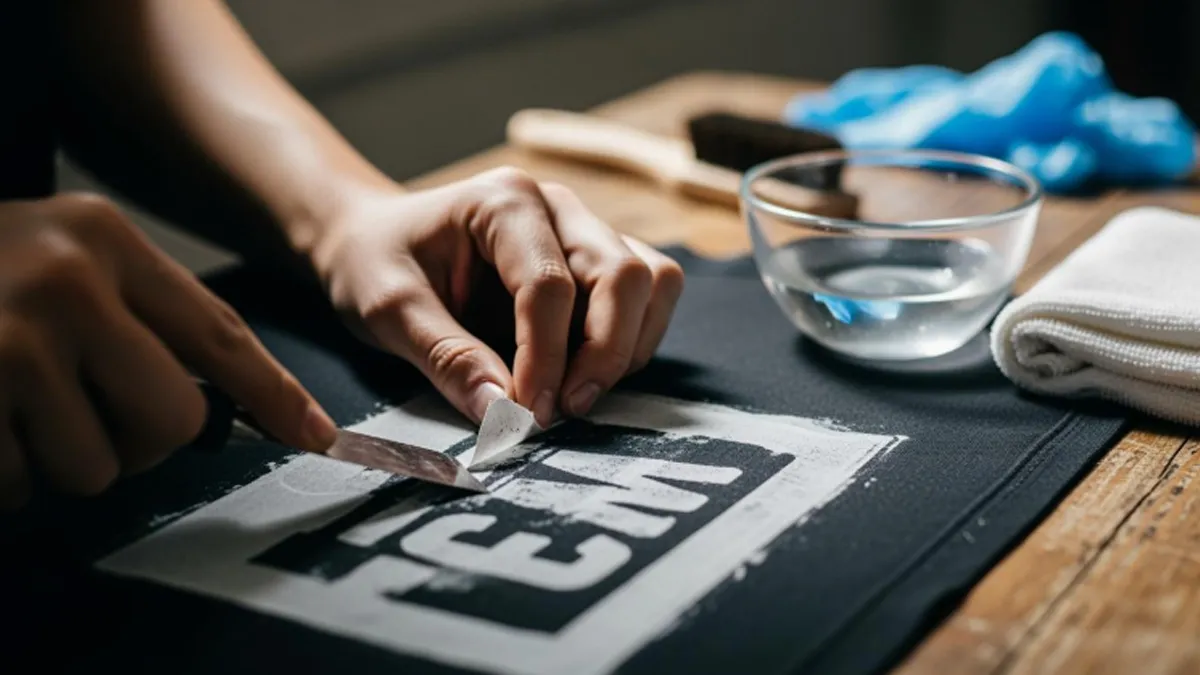
Key Takeaways
- Pick the best way for your fabric type. Acetone works well on cotton. Dish detergent is better for polyester.
- Test your removal method on a hidden spot first. This helps you avoid hurting your fabric.
- Use gentle ways like dabbing or light scrubbing. Do not scrub hard to keep the fabric safe.
- If the print is hard to remove, try using heat. A low-heat iron can move ink onto a paper bag.
- Get all your supplies ready before you start. You will need gloves, soft cloths, and mild detergents.
- Take your time when removing the print. You may need to try a few times to get it off without harm.
- After you finish, wash the fabric with mild detergent and cold water. This helps clean off any leftover chemicals.
- If you are not sure or your fabric is delicate, ask a professional for help. This can stop permanent damage.
How to Remove Screen Printing
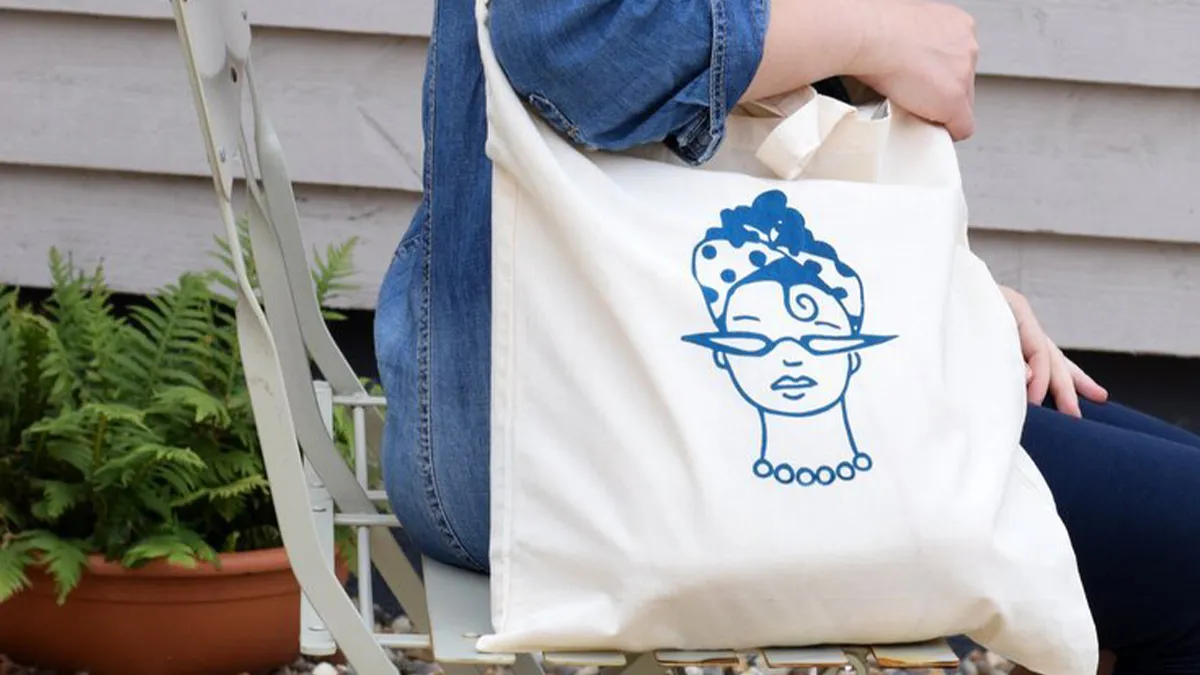
Quick Answer
If you want to know how to remove screen printing from fabric, you have a few proven options. You can use acetone, rubbing alcohol, dish detergent, heat, or a heat gun. Each method works best for certain fabrics. Always test on a small area first. You want to avoid damaging your bag, shirt, or backpack.
Overview of Methods
You have several ways to remove screen printing. Here’s a quick look at the most popular methods:
- Acetone: Works well on cotton and denim. It breaks down old or cracked ink. You should test it first because it can be strong.
- Dish Detergent: Best for polyester. Scrub with warm water and a stiff brush. Polyester does not react well to strong solvents.
- Heat Application: Good for delicate cotton. Use a low-temperature iron and a paper bag. The ink melts and transfers to the bag.
- Rubbing Alcohol: Safe for many fabrics. Dampen a cloth and rub in circles. Wash the fabric after you finish.
- Heat Gun or Hair Dryer: Softens the ink. You can scrape it off with a non-abrasive tool.
Here’s a table to help you choose the right method:
| Method | Suitable Fabric Types | Description |
|---|---|---|
| Acetone | Cotton, Denim | Powerful solvent. Breaks down ink. Test first. |
| Dish Detergent | Polyester | Use with warm water and stiff brush. Scrub gently. |
| Heat Application | Delicate Cotton | Iron over paper bag. Ink melts and transfers. |
| Rubbing Alcohol | Various | Rub gently with cloth. Wash after. |
| Heat Gun/Hair Dryer | Various | Softens ink for easy scraping. |
Pros and Cons
You want to pick the safest and most effective way to remove screen printing. Here are some pros and cons for each method:
Tip: Always check your fabric type before you start. Some methods work better for sturdy fabrics. Delicate fabrics need gentle care.
- Acetone
- Pros: Fast and strong. Removes most ink.
- Cons: Can damage colors or weaken fabric. Strong smell.
- Dish Detergent
- Pros: Safe for polyester. Easy to find.
- Cons: May take longer. Needs scrubbing.
- Heat Application
- Pros: Good for delicate cotton. No chemicals.
- Cons: Risk of burning. Needs careful handling.
- Rubbing Alcohol
- Pros: Gentle. Works on many fabrics.
- Cons: May need several tries. Not for all inks.
- Heat Gun/Hair Dryer
- Pros: Softens ink. Easy to use.
- Cons: Can overheat fabric. May not remove all ink.
If you want to know how to remove screen printing from your favorite bag or shirt, start with the safest method for your fabric. You can always try another if the first does not work. Remember, patience helps you avoid damage and get the best results.
Materials Needed
Essential Supplies
Get your supplies before you begin. This helps you work faster and safer. Here is what you need:
- Cotton balls or pads: Use these to put on acetone or rubbing alcohol.
- Soft cloths or old towels: These help clean up spills and blot the fabric.
- Stiff brush or toothbrush: You need this to scrub, especially with dish detergent or sugar scrub.
- Paper bags or parchment paper: These are good for the heat and iron method.
- Plastic scraper or old credit card: Use this to gently lift off softened ink.
- Warm water: You will use this to rinse and clean the fabric.
- Mild dish detergent: This helps break down ink, mostly on polyester.
- Small bowl or container: Use this to mix things like salt and vinegar.
Tip: Test your method on a hidden spot first. This keeps your fabric safe from damage or fading.
Recommended Products
Some products work better for removing screen printing. This is true for cotton and canvas bags. Here is a table with some good choices:
| Product Name | Type | Description |
|---|---|---|
| Salt and Vinegar | Natural | A paste made from salt and vinegar that helps lift screen printing. |
| Acetone | Chemical | A strong solvent effective for dissolving most types of ink. |
| Rubbing Alcohol | Chemical | A weaker solvent suitable for delicate fabrics, effective on some inks. |
| Goo Gone | Chemical | A commercial adhesive remover that dissolves the adhesive used in printing. |
| Ink Be Gone | Chemical | A commercial ink remover effective on various types of screen printing ink. |
| Citristrip | Chemical | A strong commercial paint stripper that dissolves ink and adhesive. |
You can buy these at stores or online. If you want a natural choice, try salt and vinegar paste. For tough ink, use acetone or Ink Be Gone. Goo Gone helps with sticky spots.
Note: Always read the label before using chemicals. Some can smell strong or hurt your skin.
Safety Gear
Stay safe when you use chemicals or heat. Protect yourself and your space with these things:
- Gloves: Wear gloves to keep your hands safe from chemicals.
- Face mask: Use a mask if you use strong-smelling products like acetone or Citristrip.
- Protective eyewear: Wear safety glasses to stop splashes from getting in your eyes.
- Apron or old shirt: Wear this to keep your clothes safe from stains.
- Good ventilation: Open a window or use a fan for fresh air.
Alert: Never mix chemicals together. Always work where air can move so you do not breathe in fumes.
With these supplies and safety gear, you are ready to start. Take your time and follow each step. This will help you get the best results.
Screen Printing Removal Methods
Acetone/Nail Polish Remover
Step-by-Step
You want to know how to remove screen printing from fabric using acetone or nail polish remover. This method works fast and is one of the easy and effective ways to remove stubborn ink. Here’s what you need to do:
- Put on gloves and make sure you work in a well-ventilated area. Acetone has a strong smell and can irritate your skin.
- Place your fabric on a flat surface. Use an old towel underneath to catch spills.
- Pour a small amount of acetone or nail polish remover onto a cotton ball or pad.
- Dab the screen print gently. Don’t rub too hard. Let the solvent soak into the ink for a few seconds.
- Use a soft cloth to blot and lift the ink. Repeat if needed, but check the fabric often.
- Rinse the area with warm water and mild detergent to remove any leftover solvent.
- Let the fabric air dry.
Tip: Always test acetone or nail polish remover on a hidden spot first. Some fabrics can discolor or weaken.
Best Fabrics
Acetone and nail polish remover are effective ways to remove screen printing from cotton and denim. You can also use them on canvas bags, but you need to be careful. Here’s what you should know:
- Acetone dissolves ink quickly and is cheap. You can find it in most stores.
- Nail polish remover is less harsh. It’s safer for delicate fabrics but may not work as well on thick ink.
- Both can cause color fading or damage, especially on cotton.
- Acetone is highly flammable. Keep it away from heat and open flames.
- Using acetone on backpacks, canvas bags, or cotton bags can irritate your skin and eyes. Always wear gloves and avoid splashing.
If you want easy ways to remove print from clothes, acetone is a good choice for sturdy fabrics. Nail polish remover works better for lighter prints and delicate items.
Sugar Scrub
Step-by-Step
Sugar scrub is one of the easy and effective ways to remove screen printing from fabric without harsh chemicals. You can use this method if you want a gentle approach. Here’s how:
- Mix equal parts sugar and warm water in a small bowl.
- Dip a stiff brush or toothbrush into the mixture.
- Scrub the screen print in small circles. Use gentle pressure so you don’t damage the fabric.
- Rinse the fabric in cold water to wash away the loosened ink and sugar.
- Repeat the process if needed. Some prints may need a few tries.
- Let the fabric dry completely.
Note: Sugar scrub works best on fresh or lightly printed designs. It’s safe for most fabrics and won’t cause fading.
When to Use
You can use sugar scrub on new screen prints or older designs. It’s gentle and eco-friendly, so you don’t have to worry about harsh chemicals. Here’s a quick look at how sugar scrub compares to chemical methods:
| Method | Effectiveness | Safety |
|---|---|---|
| Sugar Scrub | Effective for smaller, lighter prints | Gentle and eco-friendly, less risk of damage |
| Chemical Methods | More powerful for stubborn prints | Can be harsh on fabrics, risk of damage |
Sugar scrub is a good choice if you want to remove screen printing from fabric without risking damage. You can use it on cotton, canvas, and even some synthetic fabrics. Just remember to rinse in cold water after scrubbing.
Iron & Paper Bag
Step-by-Step
The iron and paper bag method is another easy and effective way to remove screen prints from cotton and canvas bags. You use heat to transfer the ink onto the paper bag. Here’s how to remove screen printing using this method:
- Place your fabric on an ironing board with the screen print facing up.
- Set your iron to low heat. Make sure there’s no steam.
- Put the shiny side of a paper bag over the screen print.
- Run the iron slowly over the paper bag, focusing on the printed area.
- Lift the paper bag and check if the ink has transferred. You may need to repeat this step a few times.
- Use a plastic scraper or old credit card to gently lift any leftover ink.
- Wash the fabric with mild detergent and let it dry.
Tip: This method works best for cotton and canvas. Don’t use it on synthetic fabrics like polyester or acrylic. Heat can melt or distort these materials, leaving permanent marks.
Tips
- Always start with low heat. High temperatures can burn or damage your fabric.
- Use a paper bag with a shiny side. This helps the ink stick and transfer better.
- If you see leftover ink, scrape gently. Don’t use sharp tools.
- For stubborn prints, you may need to repeat the process or try another method.
- Never use this method on synthetic fabrics. Polyester and acrylic can melt or shrink when exposed to heat.
If you want to know how to remove print from t shirt or canvas bag, the iron and paper bag method is one of the effective ways to remove screen printing from fabric. It’s safe for natural fibers and gives good results with a little patience.
Plastisol Remover
Plastisol remover is a powerful solution you can use when you want to remove stubborn screen printing ink. This method works best for professional-grade prints, especially on cotton and canvas. You might see it in print shops, but you can buy it online for home use.
Step-by-Step
Here’s how you can use plastisol remover to get rid of unwanted prints:
- Put on gloves and safety glasses before you start. Plastisol remover contains strong chemicals.
- Lay your fabric flat on a protected surface. Use an old towel underneath.
- Pour a small amount of plastisol remover onto a clean cloth.
- Dab the remover directly onto the printed area. Let it sit for about 30 seconds.
- Use a soft brush or cloth to gently scrub the ink. Work in small circles.
- Wipe away the loosened ink with a damp cloth.
- Rinse the fabric with warm water and mild detergent to neutralize any leftover chemicals.
- Let the fabric air dry.
Tip: Always test plastisol remover on a hidden part of your fabric first. Some fabrics can fade or weaken if you use too much.
Safety
Plastisol remover works fast, but you need to stay safe. Here are some things you should remember:
- Always wear gloves and eye protection.
- Work in a well-ventilated area. The fumes can be strong.
- Keep the remover away from children and pets.
- Never mix plastisol remover with other chemicals.
- Dispose of used cloths and leftover remover according to local guidelines.
If you follow these steps, you can remove screen printing without harming yourself or your fabric.
Remove Print from Shirt
You want to know how to remove print from shirt without ruining the fabric. You have several options, but you need to use gentle techniques. Here’s a simple guide to help you:
- Start by checking the shirt’s label. Cotton and blends respond well to acetone, rubbing alcohol, or plastisol remover. Polyester needs a softer touch.
- Lay your shirt flat. Put a towel inside to stop ink from bleeding through.
- Choose your method. For light prints, try a sugar scrub or rubbing alcohol. For heavy prints, use acetone or plastisol remover.
- Apply your chosen remover to a cotton ball or cloth. Dab the print gently. Don’t scrub too hard.
- Let the remover sit for a minute. Use a soft brush to lift the ink.
- Rinse the shirt with cold water and mild detergent. This step helps neutralize chemicals and protect the fabric.
- Air dry the shirt. Check if the print is gone. Repeat if needed.
Note: Always work in a well-ventilated area. Wear gloves and a mask if you use chemical removers.
Here are some best practices to help you remove print from shirt safely:
- Use gentle techniques to avoid fabric abrasion.
- Rinse and neutralize the shirt after you finish.
- Handle solvents with care and follow disposal rules.
If you want to remove print from shirt and keep it looking new, patience is key. Try the safest method first, and switch if you need more power.
How to Remove Screen Print from Backpack
Backpacks often use synthetic materials, so you need a different approach. You can still remove screen printing, but you should avoid harsh chemicals that might melt or stain the fabric.
Here’s how to remove screen print from backpack:
- Use heat first. Grab a hair dryer or set your iron to low. Warm the printed area for a few minutes. The heat loosens the adhesive under the print.
- If the print doesn’t lift, try isopropyl alcohol. Dampen a cloth and rub the print gently.
- For stubborn prints, use a specialized solvent like Albachem’s VLR. Follow the instructions on the bottle.
- Always test your method on a hidden spot before you treat the whole backpack.
- Wipe away any residue with a damp cloth. Let the backpack air dry.
Tip: Synthetic fabrics can melt if you use too much heat. Start with the lowest setting and check often.
You can use these steps to remove print from shirt-style logos on backpacks, too. Just remember to work slowly and check your progress. If you see any damage, stop and try a gentler method.
Here’s a quick list to help you:
- Use heat to loosen the adhesive.
- Try isopropyl alcohol if heat doesn’t work.
- Use a specialized solvent for tough prints.
If you want to know how to remove screen printing from backpacks, these methods give you the best chance to keep your bag looking fresh.
How to Remove Screen Print from Canvas Bag
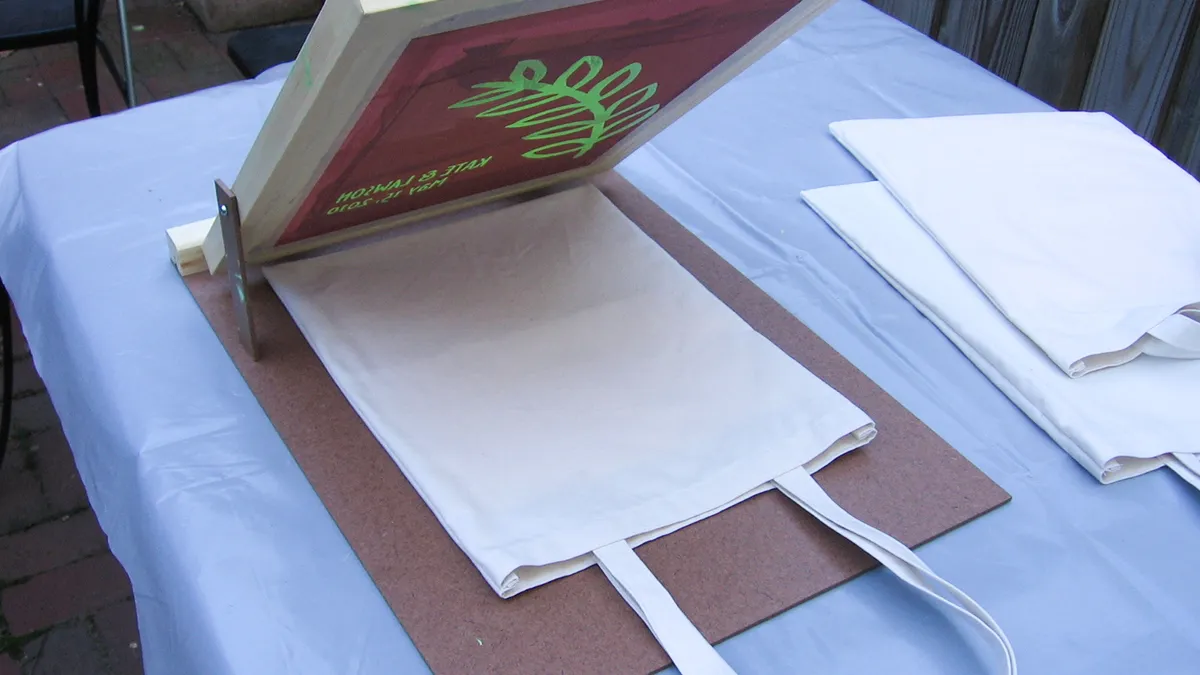
Canvas bags are tough, but you still want to keep them looking fresh. You can use several methods to get rid of unwanted screen prints. Let’s walk through the best steps to protect your bag and get great results.
Step-by-Step Guide:
- Heat & Scrape Combo
- Lay your canvas bag flat. Put kraft paper or a paper bag over the printed area.
- Use a dry iron or heat gun. Hold it over the print for about 15–20 seconds. The heat softens the ink.
- Grab a firm plastic tool, like an old credit card. Gently scrape the ink off the canvas.
- If some ink stays, use a small amount of plastisol remover. Wipe away any residue with a clean cloth.
- For stubborn spots, you can lightly sand the area with fine sandpaper. Go slow so you don’t damage the fabric.
- Sugar Scrub for Canvas
- Mix sugar with a little warm water to make a thick paste.
- Dip a stiff brush into the paste. Scrub the print in circles. Canvas is strong, so you can use more pressure than with delicate fabrics.
- Rinse the bag with cold water. Let it air dry.
- Solvent Method
- Pour a small amount of solvent (like acetone or rubbing alcohol) onto a cloth.
- Rub the ink in small circles. Let it sit for 30 seconds.
- Wipe or gently scrape off the loosened ink.
- Wash the bag with warm water and mild soap. Dry it completely.
Tip: Always test your chosen method on a hidden part of the bag first. Canvas can handle heat and scrubbing, but you want to avoid fading or rough spots.
Here’s a quick table to help you pick the right method:
| Method | Best For | Extra Care Needed |
|---|---|---|
| Heat & Scrape | Thick, old prints | Watch for overheating |
| Sugar Scrub | Light, fresh prints | Rinse well after scrubbing |
| Solvent | Stubborn ink spots | Test for colorfastness |
If you follow these steps, you can remove screen printing from your canvas bag and keep it looking sharp.
How to Remove Screen Print from Cotton Bag
Cotton bags need gentle care. You want to get rid of the print without hurting the fabric or causing discoloration. Here’s how you can do it safely:
Simple Steps:
- Act fast if you notice a stain or print you want gone. The sooner you start, the easier it is to lift the ink.
- Always use cold water. Hot water can set the ink deeper into the cotton.
- Figure out what kind of ink or stain you’re dealing with. This helps you choose the right cleaning solution.
- Blot the print gently with a clean cloth. Don’t scrub hard. Scrubbing can damage the cotton fibers.
- Pick a safe cleaning solution. Rubbing alcohol or a mild dish detergent works well for most cotton bags.
- Wash the bag with care. Use a gentle cycle if you use a washing machine, or hand wash with cold water and mild soap.
- Dry the bag naturally. Lay it flat or hang it up. Avoid using a dryer, as heat can cause shrinking or fading.
- If the print doesn’t come off after a few tries, stop. Too much treatment can weaken the fabric or change its color.
Note: Always test your cleaning solution on a small, hidden spot first. This helps you avoid surprises like fading or rough patches.
Here’s a quick checklist for cotton bags:
- Use cold water every time.
- Blot, don’t scrub.
- Choose gentle cleaners.
- Wash and dry with care.
- Know when to stop.
If you follow these steps, you can remove screen printing from your cotton bag and keep it looking clean and bright.
Tips for Different Fabrics
Cotton
Cotton is one of the most common fabrics you’ll work with when removing screen printing. You want to keep your cotton bag or shirt looking fresh, so start with gentle methods. Here are some tips that textile experts recommend:
- Try acetone or nail polish remover. Dab a little on a cotton ball and gently press it onto the print. Move in small circles until the ink starts to fade. This can take 10–15 minutes, so be patient.
- Use a hot iron with a towel or paper bag over the print. The heat loosens the ink, making it easier to lift off.
- After you treat the print, gently scrape it with a plastic card or your fingernail. Wash the fabric with mild detergent to remove any leftover ink or solvent.
- Always test your method on a hidden spot first. Some cotton fabrics can lose color or get weak if you use strong chemicals.
- Use clean tools every time. This helps you avoid spreading ink or leaving residue behind.
- If your cotton item is expensive or special, you might want to ask a professional for help.
Tip: Don’t rush. Cotton can handle a bit of scrubbing, but too much force can damage the fibers.
Canvas
Canvas is tough, so you have more options. You can use heat, scrubbing, or even a little solvent. Here’s how you can get the best results:
- Start with the heat and scrape method. Place a paper bag over the print and use a warm iron. The ink will stick to the bag as you lift it away.
- For stubborn prints, use a sugar scrub. Mix sugar and warm water, then scrub the print with a stiff brush. Canvas can handle more pressure than cotton.
- If you need extra help, try a small amount of acetone or rubbing alcohol. Rub gently and watch for any color changes.
- Always test your chosen method on a hidden part of the bag. Canvas can fade if you use too much solvent.
- After you finish, wash the canvas with mild soap and let it air dry.
Note: Canvas bags and backpacks often have coatings or linings. Check these before you start, so you don’t damage them.
Synthetic
Synthetic fabrics like polyester or nylon need special care. They can melt or stretch if you use too much heat or strong chemicals. Here’s what you should do:
- Avoid high heat. Use a hair dryer on low or a warm iron with a protective cloth between the iron and the fabric.
- Stick with gentle cleaners. Dish detergent and warm water work well. Scrub lightly with a soft brush.
- If you try a solvent, pick rubbing alcohol instead of acetone. Acetone can damage synthetic fibers.
- Always test your method on a small, hidden area. Some synthetics react badly to even mild chemicals.
- Let the fabric air dry. Don’t use a dryer, as heat can cause shrinking or warping.
| Fabric Type | Best Removal Method | What to Avoid |
|---|---|---|
| Cotton | Acetone, Heat, Scraping | Too much force, bleach |
| Canvas | Heat, Sugar Scrub | Over-scrubbing, harsh chemicals |
| Synthetic | Gentle cleaners, Low heat | High heat, acetone |
Callout: If you’re not sure what your fabric is, check the label. When in doubt, start with the gentlest method and work your way up.
Delicate
Delicate fabrics need extra care when you want to remove screen printing. You might have silk, rayon, chiffon, or lace. These materials can tear, stretch, or lose color if you use strong chemicals or rough tools. You want to keep your item looking nice, so let’s talk about the safest ways to handle delicate fabrics.
First, always check the label. You want to know what kind of fabric you have. Some delicate items need dry cleaning only. If you see that, you should not try any DIY methods. You can ask a professional for help.
If you decide to try at home, start with the gentlest method. Use cold water and a mild detergent. Dip a soft cloth in the solution. Dab the print lightly. Do not scrub. You want to lift the ink, not push it deeper into the fibers.
Here’s a quick list of safe steps for delicate fabrics:
- Test your method on a hidden spot first.
- Use cold water and gentle soap.
- Dab, don’t rub or scrub.
- Avoid acetone, bleach, or strong solvents.
- Let the fabric air dry flat.
Tip: If you see the fabric changing color or texture, stop right away. You want to avoid permanent damage.
You might wonder about using natural cleaners. Sometimes, a paste of baking soda and water works. Spread a thin layer on the print. Wait five minutes. Wipe it off with a damp cloth. This method is gentle and does not use harsh chemicals.
Let’s look at a table for quick reference:
| Method | Safe for Delicate Fabrics | Risk Level |
|---|---|---|
| Cold Water & Soap | Yes | Low |
| Baking Soda Paste | Yes | Low |
| Acetone/Nail Polish | No | High |
| Heat/Iron | No | High |
| Sugar Scrub | Sometimes | Medium |
You want to avoid heat and strong chemicals. These can melt, shrink, or discolor delicate fabrics. If you need to remove a stubborn print, you can try a sugar scrub, but use a very soft brush and light pressure.
Alert: Never use a dryer or direct sunlight to dry delicate fabrics. Lay them flat on a towel. This helps keep their shape and color.
If you feel unsure, you can always ask a professional cleaner. They know how to treat delicate materials. You want your item to last, so sometimes expert help is the best choice.
You can keep your delicate fabrics looking beautiful if you use gentle methods and pay attention to signs of damage. Take your time. Patience gives you the best results.
Precautions & When Not to Remove Screen Printing
Risks
You might feel excited to start removing screen printing from your favorite bag or shirt. Before you grab your supplies, you should know about the risks. Some methods can damage your fabric. Chemicals like acetone or plastisol remover can cause fading or weaken the fibers. Heat can shrink or melt synthetic materials. Scrubbing too hard might leave rough patches or holes.
Here’s a quick table to help you spot common risks:
| Risk | What Can Happen | How to Avoid |
|---|---|---|
| Chemical Damage | Fading, holes, weak spots | Test on a hidden area first |
| Heat Damage | Melting, shrinking | Use low heat, check often |
| Over-Scrubbing | Rough patches, tears | Scrub gently, use soft tools |
| Color Change | Stains, uneven color | Use mild cleaners |
Alert: If you see your fabric changing color or texture, stop right away. You want to keep your item safe.
Professional Help
Sometimes, you should not try to remove screen printing by yourself. If your item is expensive, rare, or has sentimental value, you might want to ask a professional. Textile experts and dry cleaners have special tools and products. They know how to treat delicate fabrics and tough prints.
You can look for help if:
- The fabric is silk, lace, or another delicate material.
- The print covers a large area.
- You tried a method and saw damage.
- You feel unsure about the right method.
Tip: Professionals can save your item from permanent damage. You can ask for advice before you start.
Warning Signs
You need to watch for warning signs while removing screen printing. If you notice any of these, you should stop and rethink your plan:
- The fabric feels thin or weak.
- The color starts to fade or bleed.
- The print does not lift after several tries.
- You see holes, tears, or rough spots.
- The fabric smells strong after using chemicals.
If you see these signs, you should not keep trying. You might make the damage worse. You can switch to a gentler method or ask for professional help.
Note: Removing screen printing is not always safe for every fabric. You want to protect your item, so pay attention to how it reacts.
You can avoid most problems by testing your method on a small, hidden spot first. If you feel unsure, you can always ask an expert. Your bag, shirt, or backpack will last longer if you treat it with care.
Troubleshooting Remove Screen Printing from Fabric
If Print Won’t Come Off
You tried everything, but the print still sticks to your fabric. Don’t worry. You can troubleshoot and find a solution. Sometimes, the ink or emulsion just needs more time or a different approach. Here’s a table with common problems and what you can do:
| Issue | Solution |
|---|---|
| Remover didn’t work long enough | Apply again and let it sit longer. Scrub gently. |
| Screen overexposed or heated | Use remover on both sides. Scrub and repeat. |
| Underexposed screen | Repeat remover and scrubbing steps. |
| Hardened emulsion | You may need to re-stretch or replace the screen. |
| Weak remover mixture | Mix a fresh batch. Follow instructions and stir well. |
| Remover dried out | Apply again. If it fails, try a stronger chemical and rinse with a pressure washer. |
| Leftover ink blocks remover | Clean off all ink before using the reclaiming agent. |
| Not enough time for remover | Rinse, dry, and try again. Be patient and scrub well. |
| Missed spots on mesh | Reapply and scrub until all emulsion is gone. |
Tip: If you see the print fading but not lifting, keep going. Sometimes, you need to repeat the process a few times. Patience helps you get better results.
Minimize Damage
You want to remove prints without hurting your fabric. Here are some ways to protect your item while you work:
- Test your method on a hidden spot first. This helps you avoid surprises.
- Use gentle tools like soft brushes or cloths. Avoid sharp scrapers.
- Work slowly. Rushing can cause tears or rough patches.
- Rinse with cold water after each step. This helps wash away chemicals and keeps fibers strong.
- If you see color fading or the fabric feels weak, stop right away.
Alert: Never mix different chemicals. Some combinations can damage your fabric or cause strong fumes.
Restore Fabric
After you remove a print, your fabric might look dull or feel rough. You can bring it back to life with a few easy steps:
- Wash the fabric with mild detergent and cold water. This removes leftover chemicals.
- Air dry your item. Avoid using a dryer, which can shrink or fade the fabric.
- If the area feels stiff, soak it in a mix of water and a little vinegar. Rinse well and dry flat.
- For rough spots, use a fabric softener or conditioner. Rub gently and rinse.
- If you see small tears, patch them with a matching fabric or use iron-on patches.
Note: Restoring your fabric takes time. Treat it gently and check for improvement after each step.
You can remove prints and still keep your favorite bag or shirt looking fresh. If you run into trouble, try these tips and don’t give up. Your fabric can bounce back with a little care.
Prevent Future Issues
You want your fabric to stay fresh after you remove screen printing. You can avoid future problems with a few smart habits. Let’s talk about what you can do next time so you don’t run into the same trouble.
1. Test First, Always
Before you try any removal method, test it on a hidden spot. You can see how your fabric reacts. If you notice fading or damage, switch to a gentler method. This step saves you from big mistakes.
2. Choose the Right Tools
Pick soft brushes, clean cloths, and safe scrapers. Sharp tools can tear your fabric. Strong chemicals can cause stains or holes. You want to use the safest supplies for your fabric type.
3. Read Labels and Instructions
Check the care label on your bag, shirt, or backpack. Some fabrics need special treatment. If you use a product, read the instructions. You want to follow safety tips and use the right amount.
4. Work in a Safe Space
Set up your workspace before you start. Open a window or use a fan. Wear gloves and a mask if you use chemicals. You want to keep yourself safe from fumes and spills.
5. Go Slow and Be Patient
Rushing can cause damage. Take your time with each step. If the print does not lift right away, repeat the process. You want to avoid scrubbing too hard or using too much heat.
6. Clean Up After Removal
Wash your fabric with mild detergent and cold water. This step removes leftover chemicals. Air dry your item. You want to keep the fibers strong and colors bright.
Tip: If you plan to print again, make sure the fabric is clean and dry. Old ink or chemicals can mess up new designs.
7. Store Your Items Properly
Keep your bags and shirts in a cool, dry place. Avoid direct sunlight. Sun can fade colors and weaken fibers. You want your items to last longer.
Here’s a quick table with do’s and don’ts:
| Do’s | Don’ts |
|---|---|
| Test on hidden spot | Skip safety gear |
| Use gentle tools | Use sharp scrapers |
| Read care labels | Ignore instructions |
| Work in ventilated area | Mix chemicals |
| Wash after removal | Use hot water |
| Store in cool, dry place | Leave in sunlight |
You can prevent future issues by following these steps. You’ll keep your fabric looking great and avoid damage. If you ever feel unsure, ask a professional for help. Your favorite bag or shirt will thank you!
Conclusion
You have several ways to remove screen printing from fabric. Try heat, solvents, or gentle scrubbing. Always wear gloves and a mask. Open a window for fresh air. Pick the method that matches your fabric type. Cotton, polyester, and nylon need special care. Test on a small spot first. If you feel unsure, ask a textile expert. Want custom bags or new designs? Work with INITI Bag. Our team helps you create and produce quality bags from start to finish.
FAQ
Can you remove screen printing from any fabric?
You can remove screen printing from most fabrics. Cotton and canvas work best. Synthetic and delicate fabrics need gentle care. Always test your method on a hidden spot first.
Will acetone damage my bag or shirt?
Acetone can fade colors or weaken fibers. You should use it only on sturdy fabrics like cotton or denim. Always wear gloves and test on a small area before using.
How many times should I repeat the removal process?
You might need to repeat the process two or three times. If the print does not lift, switch to a different method. Patience helps you avoid damage.
Is it safe to use heat on all fabrics?
No, heat works best on cotton and canvas. Synthetic fabrics like polyester can melt or shrink. Use low heat and check your fabric often.
What should I do if the print leaves a stain?
Try washing the fabric with mild detergent and cold water. If the stain stays, use a gentle cleaner or fabric softener. Avoid scrubbing too hard.
Can I use household products to remove screen printing?
Yes, you can use sugar, vinegar, or dish soap for light prints. These work best on cotton and canvas. Strong prints may need special removers.
Should I wash my fabric after removing the print?
You should always wash your fabric after removal. This step gets rid of leftover chemicals and helps restore softness. Air dry for best results.
When should I ask a professional for help?
Ask a professional if your fabric is delicate, expensive, or has sentimental value. If you see damage or feel unsure, experts can help you avoid permanent harm.


